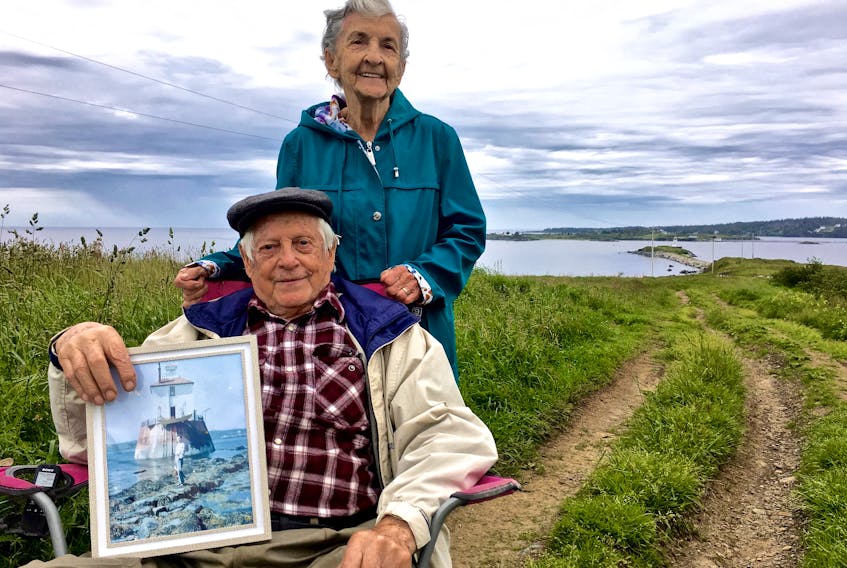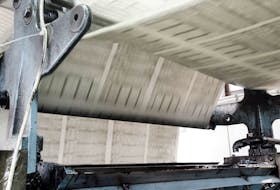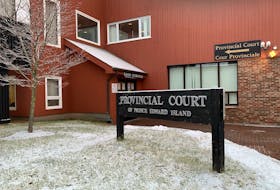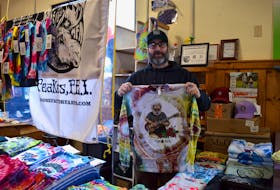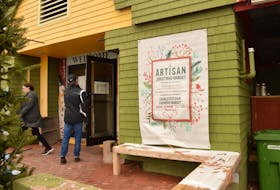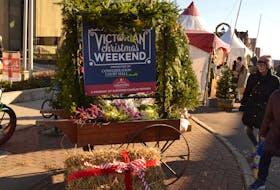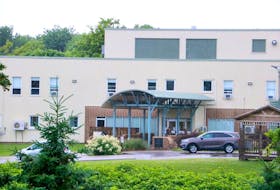YARMOUTH, N.S. — Close to 90 years ago, the rise and fall of the tide were an important factor for six young children who lived in Bug Light, at the end of Bunkers Island, Yarmouth County.
Robert Cottreau, 91, is the sole remaining member of the family that called the lighthouse home for 29 years.

School days
Robert’s earliest memories of Bug Light were of going to school around the age of seven. At low tide, the youngsters had to descend a 25-foot ladder, then pick their way through jagged, slippery, seaweed-draped rocks to level ground. Depending on when low tide was, that sometimes meant getting up at 4 a.m. and making the journey across by lantern-light. In the winter there were ice-cakes that made the going even tougher.
The children would stay in a shanty onshore until daylight, then finish the trek to the Sand Beach school, two-and-a-half miles away. The older children walked to Yarmouth Academy, five miles away.

The house on Bug Light
Robert’s parents, Ida and Jules Cottreau, moved to Bug Light with their family in 1930. The beacon had been in use since 1874 and continues to supplement the Cape Forchu lightstation at the mouth of the harbour.
Most people who hear there once was a house on Bug Light are amazed to learn this.
In a story published by the Atlantic Advocate in May 1965, the living quarters are described as consisting of a basement inside the metal base, a 22 x 22-foot kitchen and three bedrooms upstairs. Heat was scantily provided by a stove in the kitchen and another upstairs.
Robert’s sister Jean would often go to bed with an umbrella because the roof leaked so badly. She told the Advocate, “it was nothing for us to wear a raincoat to bed.”
The lighthouse bell had a 1,500-pound weight on it and had to be wound up every six hours by hand. The lightkeepers dory was pulled up at night and hung on davits.

Up and down the ladder
As one might imagine, the metal ladder sometimes proved a challenge. Albert, the fourth son, fell from the top when he was 14. He injured his head and arm, missed a week of school and had to wear eye glasses from then on as a result of the accident.
Another incident involved a broken rung that jabbed their mother. She was laid up for eight months.
The vertical climb wasn’t a problem for their dog Teddy, who supplemented the bell with his barking when ships approached. Robert says Teddy could go up the ladder faster than they could climb but for descents he relied on a volunteer.
“He was quite a dog. When he wanted to come down, he’d get up there by the ladder and wag his tail. We’d get on the ladder, lean in and he’d put his front paws on our shoulders and his hind paws above a belt and we could carry him down. When he got on his rocks he was on his own. He could climb the ladder better than we could.”
Childhood highlights
When harbour dredging took place, the kids had a front-seat view. Robert says the workers would drill all afternoon and then tow the dredge across the harbour when they were ready to blast the seafloor.
“The deep-sea divers would wear these big helmets and put the charges in and then they’d blow them. We used to love to watch that. They were right alongside us, we could have hit them with a rock.”
From the top of the light the children could also see the old Bluenose ferry leave the harbour.
“You’d see that thing go down in the sea and it would be gone (in a wave trough), next thing you’d see it come up and the water would be pouring off it. I always said, I’d never want to work on that thing. I ended up spending 32 years on it.”
Robert worked as a deckhand on the Bluenose as a young man, then became a bosun.

Shore frightening
Robert and his oldest brother, Freddie, made a hike to town one evening. Robert wanted to watch a show and Freddie was supposed to pick him up afterwards around 11:30 p.m.
“I went and saw the Mummy’s Tomb. Nobody should go see a story like that, eh?” said Robert.
Freddie didn’t show up at the appointed time and Robert waited until Capital Theatre closed at 12:30 a.m., then set off for home.
This was during the wartime and Robert says stories about bodies floating around out at sea were all the gossip.
As he was walking along the beach in the dark he stepped into something that squashed up around his shoes as far as his ankles.
“I took off and got home. Next morning, I was pretty scared but there was no getting away from it. I thought about it and had to go see what it was.”
He set off to find the spot and found his footprint in the middle of a “big long watermelon.”
“I didn’t tell anybody about that for a long time,” he laughed.
He added that he had passed by a little cemetery that night near the location.
“That didn’t help any, but they couldn’t catch me that night!”

The ocean’s power
The sea used to come right up over the top of the lighthouse at times. Robert says the children couldn’t even get outdoors to play.
One Sunday afternoon their cousin George Cottreau came for dinner. Afterwards the youngsters went to the south side of the house. Looking up the harbour, they saw three giant waves heading their way. When they got to the light, they were as high as the second floor.
“They took all the windows out and everything in the kitchen. I got a cut and George did as well. He never came back again.”
Warning of inclement weather was rudimentary at best. There were no Environment Canada warnings those days.
In the Town of Yarmouth people relied on what they referred to as a stormdrum, a big post as high as a telephone pole with an arm on it.
If there was a gale, a white light would be hoisted for northerly winds. The southwesterly winds, which resulted in the worst conditions for Bug Light, were indicated by two lights. The Cottreau family never had a phone at Bug Light until the late 1940s, early ‘50s, when electricity was finally available to them.
Hurricane Edna
On Sept. 11, 1954, hurricane Edna blew into Yarmouth, packing winds of 90-100 miles per hour.
“Oh that was bad,” said Robert.
“We were in the shanty, it was in the afternoon and we were fixing traps. It was raining and blowing. My dad was in the lighthouse and came across and said ‘what do you think fellas? If we’re going ashore, we’ve got to go, because the sea’s coming right over the rocks. We haven’t got much chance to get off after.’” They left the dog in the shanty and walked down to their old home in Kelly’s Cove and next morning one of the boys got up early and went down to the light. He ran back and told the other family members to come help dig the dog out of the shanty. The storm had pushed large rocks all the way around the building. The dog was safe inside.
“That’s the first and last time I ever remember that happening – rocks piled up around a building from the sea. You’d never believe the sea could do that, eh?” said Robert.
When they climbed up to the house, all the shutters and windows were gone. The door was smashed and everything was in shambles where the sea had broken through. The waves had shoved most of the contents over to the north side. A new washer that had only been used six times had been pummelled. They found the cover to it 200 feet away in the harbour.
“I’m glad we left, because if we had of stayed we would have been out trying to work on the shutters and we wouldn’t be here today,” said Robert.
The lighthouse was repaired and the windows were replaced and work went on as usual.

Leaving the lighthouse
Robert was around 26 when he left his childhood home. He stayed until then for the convenience the location provided him as a lobsterman. All he had to do was lower the boat down from the front of the lighthouse, row over to his lobster boat at the wharf and sail off to the fishing grounds.
In 1959, when the Cottreau family learned that the super-structure of Bug Light was to be replaced with an unmanned light, Jean Cottreau sat down on the shore and cried like a baby.
“It was awful to see it being torn down. It was as though it was part of me,” she told the Advocate.
The government provided the family with a new home and modern conveniences on Bunkers Island.
Robert becomes animated when recalling his childhood memories of living on Bug Light.
“It was a good life, except when it stormed. We were all together there.”

